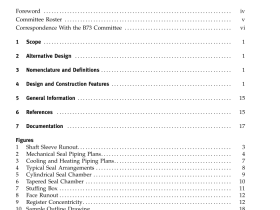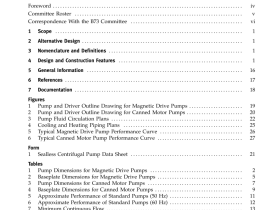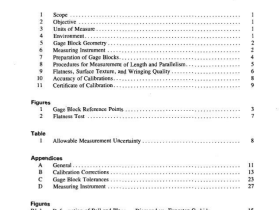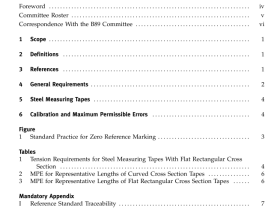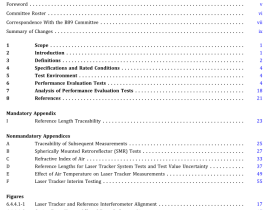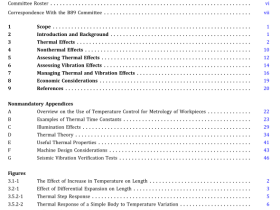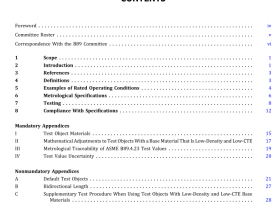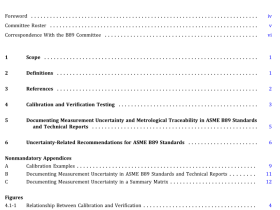ASME MFC-12M pdf download
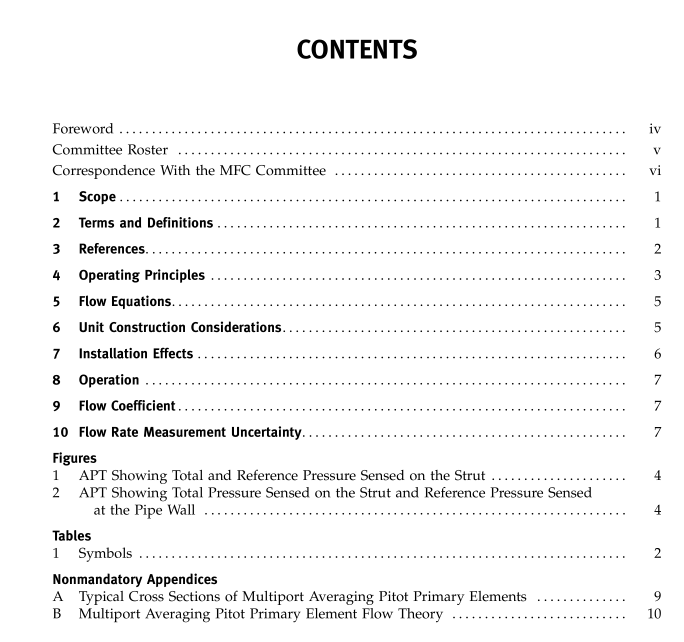
ASME MFC-12M pdf download Measurement of Fluid Flow in Closed Conduits Using Multiport Averaging Pitot Primary Elements
4 OPERATING PRINCIPLES
4.1 Description of Operation The multiport averaging Pitot primary flow element or averaging Pitot tube (APT) is similar to the conven- tional single point Pitot tube in operation, but differs in construction. It is typically designed as a strut, or cylin- der (the cross section of the cylinder is not necessarily circular), that is inserted across the circular pipe or con- duit on a diameter. Some APT designs have more than one strut to achieve a more representative sample of the fluid velocity in the pipe or conduit (see Nonmandatory Appendix A). The strut has ports that sense the total velocity head (total pressure), and a reference, or low pressure. In some APT designs the reference pressure is measured at the pipe wall. Figures 1 and 2 show two commonly used methods for sensing the total pressure and reference pressure. The sensed pressure(s) are con- veyed through isolated passages, or chambers in the cylinder to the exterior of the assembly, where there are connections to the secondary device. By combining the individually sensed pressures from its sensing ports, the APT produces a differential pressure that can be related to the average fluid velocity in the pipe or conduit.
4.2 Bernoulli’s Equation
As with other differential pressure-based flow pri- mary elements, the underlying principle for the APT sensor is the application of the momentum equation from basic fluid theory. Using the assumptions for steady state, inviscid, and incompressible flow along a streamline, the equation reduces to the Bernoulli equa- tion (see Nonmandatory Appendix B)
where
g p local acceleration of gravity
P s p fluid static pressure
P t p fluid total pressure
U p fluid velocity
z p vertical distance from a datum reference to the point of measurement p fluid density
4.3 Total Pressure The multiport averaging Pitot primary element mea- sures the total pressure by stagnating, or bringing to rest, the fluid at the upstream surface of the element. The total (or stagnation) pressure is then sensed at ports that are fabricated in the upstream surface of the ele- ment. The location, size, and shape of the sensing ports may differ by manufacturer and correspond to the selected method of sampling, or averaging of the fluid velocity profile. Provided the flow is steady and is not highly distorted (e.g., swirling flow or skewed velocity profile), thetotalpressure,measured atthe highpressure tap, will represent the average of the individual pressure samples. The measured total pressure is related to the measured velocity through the operating equation. The signal generated at the sensor’s high pressure tap is representative of the sampled total pressures, not an average of the sampled velocities. The ability of the system to provide a true average for various velocity distributions will depend on the method for locating the sensing holes (see Nonmandatory Appendix B).
